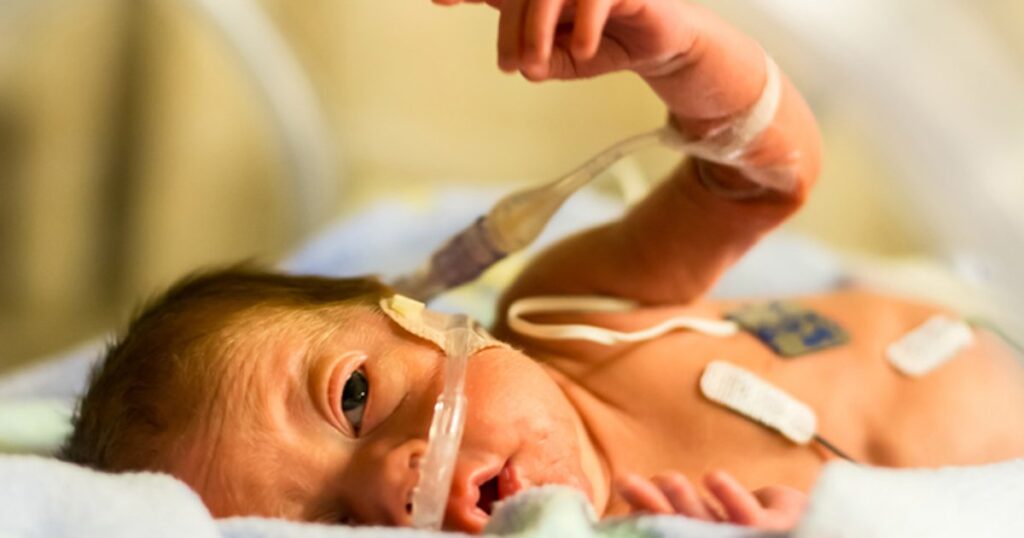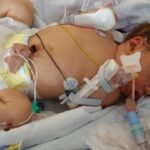Neonatal opioid dependence, also known as neonatal abstinence syndrome (NAS), is a condition in which newborns experience withdrawal symptoms due to prenatal opioid exposure. This occurs when an expectant mother uses opioids during pregnancy, leading to fetal drug dependence. After birth, the sudden discontinuation of opioid supply triggers withdrawal symptoms in the infant, affecting multiple organ systems.
The rising prevalence of opioid use disorder (OUD) in pregnancy has led to an increase in neonatal opioid dependence cases, necessitating comprehensive management strategies for affected newborns. Early diagnosis and appropriate medical intervention are critical to reducing long-term developmental complications.

Causes of Neonatal Opioid Dependence
Neonatal opioid dependence results from maternal opioid use during pregnancy, including both prescription opioids and illicit opioids:
1. Prescription Opioids
- Oxycodone (OxyContin, Percocet)
- Hydrocodone (Vicodin, Norco)
- Morphine
- Methadone (used for opioid addiction treatment)
- Buprenorphine (Subutex, Suboxone)
2. Illicit Opioids
- Heroin
- Fentanyl
- Opium
Mechanism of Neonatal Opioid Dependence
During pregnancy, opioids cross the placenta and bind to fetal opioid receptors, leading to dependence. After birth, the sudden loss of maternal opioid supply results in withdrawal symptoms, requiring medical intervention.
Symptoms of Neonatal Opioid Withdrawal
Neonatal opioid withdrawal symptoms typically appear within 24 to 72 hours after birth but can take up to 5-7 days, depending on the opioid type.
Neurological Symptoms
- Excessive crying (high-pitched)
- Irritability and tremors
- Seizures (in severe cases)
- Hypertonia (increased muscle tone)
Gastrointestinal Symptoms
- Poor feeding or difficulty sucking
- Vomiting
- Diarrhea
- Weight loss or poor weight gain
Autonomic Dysfunction
- Fever
- Sweating
- Yawning
- Sneezing
- Nasal congestion
Respiratory Symptoms
- Rapid breathing (tachypnea)
- Respiratory distress (retractions, nasal flaring)
Diagnosis of Neonatal Opioid Dependence
1. Clinical Assessment
Finnegan Neonatal Abstinence Scoring System (FNASS) – This tool evaluates withdrawal severity using a score-based system. Higher scores indicate more severe withdrawal requiring pharmacological intervention.
2. Maternal History and Screening
- Urine drug screening – Identifies maternal opioid use.
- Self-reported opioid use – Evaluates maternal substance use during pregnancy.
- Prenatal medical records – Identifies prescribed opioid medications.
3. Neonatal Toxicology Screening
- Urine drug test – Detects opioid exposure in the newborn.
- Meconium analysis – Provides a longer detection window for opioid exposure.
- Umbilical cord tissue testing – Offers a non-invasive screening method.
Treatment of Neonatal Opioid Dependence
1. Supportive Care (First-Line Management)
- Rooming-in with mother – Reduces withdrawal severity.
- Swaddling and gentle handling – Provides comfort.
- Breastfeeding (if mother is on methadone or buprenorphine) – Reduces withdrawal symptoms.
- Minimizing sensory stimulation – Prevents agitation.
2. Pharmacological Therapy (Severe Cases)
If withdrawal symptoms are severe (high FNASS score), pharmacological treatment is required:
| Medication | Use Case | Administration |
|---|---|---|
| Morphine | Standard treatment for NAS | Oral |
| Methadone | Alternative to morphine | Oral |
| Buprenorphine | Emerging treatment for NAS | Sublingual |
| Phenobarbital | Used for severe cases with seizures | Oral/IV |
3. Weaning Protocol
- Opioid medications are gradually reduced over 7-14 days to prevent rebound withdrawal.
- Infants are monitored for signs of withdrawal recurrence before discharge.
Complications of Neonatal Opioid Dependence
Without timely intervention, neonatal opioid dependence can lead to:
- Increased risk of sudden infant death syndrome (SIDS)
- Poor neurodevelopmental outcomes (cognitive delays, behavioral issues)
- Growth retardation and failure to thrive
- Seizures and long-term neurological damage
Prevention of Neonatal Opioid Dependence
1. Maternal Opioid Use Disorder (OUD) Management
- Medication-Assisted Treatment (MAT) – Methadone or buprenorphine therapy for pregnant women with opioid use disorder.
- Prenatal counseling – Educating mothers about opioid risks.
- Supervised opioid tapering – Gradual reduction under medical supervision.
2. Neonatal Care Strategies
- Universal maternal drug screening – Identifies opioid use early.
- Access to addiction treatment services – Supports mothers with substance use disorders.
- Postnatal monitoring of at-risk infants – Ensures early intervention.
Long-Term Outlook for Infants with NAS
- Most infants recover fully with early treatment but require developmental monitoring.
- Early intervention programs (physical and occupational therapy) improve cognitive and motor outcomes.
- Parental education and social support services help reduce relapse rates and improve neonatal care.
Neonatal opioid dependence is a growing public health concern driven by the opioid crisis. Comprehensive management, including maternal treatment, neonatal withdrawal care, and long-term follow-up, is essential to improving outcomes for affected infants. Prevention strategies focused on maternal health and opioid use disorder treatment are key to reducing the incidence of NAS and its associated complications.

